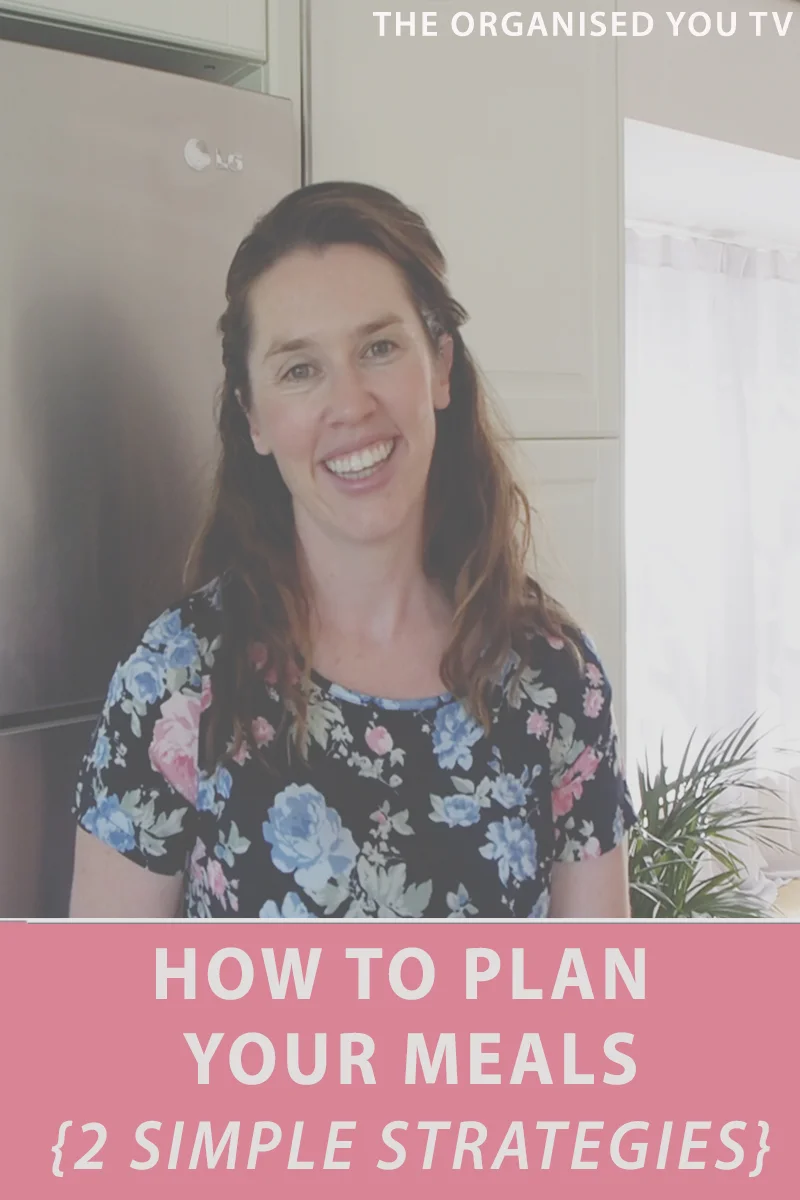Have you heard yourself saying 'I just don't have enough time' or 'I wish I had more time' more often than you'd like to admit? I know I have! There just never seems to be enough hours in the day for all the things we want to achieve in our busy lives, and having a list of tasks and to-do's constantly swirling around your head is overwhelming.
If you don't have a plan for how you're going to tackle them, you'll either be confused about which tasks are the real priorities and spend all your time on the little jobs that are not that important, or you'll get totally overwhelmed and do nothing! A simple weekly planning and scheduling session will help you to use your time more effectively, be more productive and achieve your goals. Want to join me?
If you want to learn how to plan, prioritise and organise your time better, The Productivity Pack will help create more calm and order in your life... and it's only $7!
Check it out here >>
Creating a plan for your week is a two-fold process which, once you get the hang of, will become easier and quicker to implement. The first part involves creating a Master Planning List that you can refer back to; the second part involves prioritising and scheduling weekly tasks. Here's a step-by-step plan for how to tackle your planning session.
Step 1. Choose a time to plan
Choose a time that best suits you to create a schedule for the upcoming week. A Sunday evening or early Monday morning would be the optimal times as you should have a good idea of what's coming up. Having a plan that maps out your time means you'll be able to start your week in a more efficient and productive way as you'll know exactly what you want and need to accomplish. Aim to stick to the same planning time each week so your scheduling session becomes a natural part of your weekly routine.
Step 2. Brainstorm your 'life categories' on a Master Planning List
Firstly, you'll be creating your Master Planning List, which is something you can continually refer back to and track your progress (grab your copy for free on the green button below). A Master Planning List does not need to be rewritten every week - once every month or every few months should be sufficient. However, it's important to have this list in front of you when you're planning your week so you can focus on what's really important, be more productive and achieve your goals!
Here's how to create it... In a notebook (or using the template already created for you on the button above), list the 'life categories' for which you have roles and responsibilities. This will help focus your planning, and allow you to set goals for what you want and need to do in each area. Categories may include:
Household
Work/business
Family (put each family member under their own specific heading if you want to be really focussed)
Finances
Social
Yourself - hobbies, me-time, appointments
Relationship
Step 3. Set goals and list tasks under each category
Under each of these categories, you can now set some goals that you would like to achieve in the next few months, and list the related tasks related. Try to include as much detail as you can.
Some examples:
Under Household, you may have home projects you're working on so you could list the tasks that need to be undertaken to finish the project, items you need to purchase, areas to decorate, or general maintenance and cleaning tasks.
Under Finances, you may need to revise your budget, set up direct debit systems, or update your paperwork for tax time.
Under Social, you may want to organise a get-together with friends you haven't seen in a while, look into joining a club, arrange a dinner party or a go on a fun outing.
Under Family, you may need to complete school forms, pay fees, organise a birthday party, or start planning a family vacation for the next school holidays.
Under Relationship, you may want to set up regular date nights with your partner, which would involve arranging baby-sitters for a particular evening and creating a list of new restaurants to try out
This brainstorming session is really just about listing everything you would like and need to accomplish, but it also encourages you to focus on yourself and your relationships, rather than just chores and tasks.
Step 4. Prioritise
Now it's time to decide on the things that you really want and need to achieve for the upcoming week. Put a star next to your top tasks under each category. The important tasks would include those with deadlines or due dates, assignments, meetings, and your most important tasks. Choose 1-3 that you want to accomplish for each day.
Step 5. Set time limits
Mark a time next to how long you think each of these priority jobs would take to achieve - err on the side of generosity when giving a time, as tasks almost always take longer than you initially anticipate! Even if it's something simple like filling out a form or making a phone call, consider whether you have all the information you need easily accessible, or whether you'll need to hunt through your paperwork to find relevant numbers or information. This will ultimately add to the time the task will take to complete.
Step 6. Mark out your calendar with top tasks
Now is the time to transfer these priority tasks onto your weekly calendar. Whether you choose to go digital (Google Calendar is my current fave!) or paper (grab your free template on the button above), your job is the same - to schedule in your top 1-3 tasks for the day and the time you think they'll take.
Firstly, you need to block out your weekly commitments and think carefully about which days you'll actually be able to accomplish particular tasks. If you have a crazy work day, school pick-up, sports practise and dinner preparation to take care of, then don't schedule a lot of tasks for that day! One priority task might be enough, otherwise you'll be chasing your tail all day long. Be kind to yourself and realistic with what's already going on in your schedule.
Group smaller, similar tasks together like making phone-calls and appointments, or paying a bill and filling out a form. Doing it this way means you can aim to accomplish 3 priority tasks for the day. If it's a bigger task, perhaps work related or event planning, then you may only schedule 1 priority task for the day. It's also important to schedule the most important things early in the week when you're feeling most motivated.
Step 7. Modify your initial planning
Once you've scheduled your priority tasks into each day, you should be able to see some wiggle room for those smaller tasks, such as household chores and everyday to-do's. It is up to you whether you record all of these if you like to have everything in front of you, or whether you feel confident in just knowing what has to be done daily. This is a totally individual preference.
When your priority tasks have been recorded onto your weekly planner, go back to your Master Planning List, and put a small mark next to those tasks. If you do manage to achieve them during your week, you can cross them off the Master Planning List during the following weekly planning session. Those tasks that you didn't manage to accomplish (which is bound to happen when life's unexpected busy-ness crops up!) can be rescheduled onto the following week's planner. Make sense?
You'll know it's time to create new Master Planning List when most or all of the tasks have been checked off. Obviously new ones will always crop up, so you may want to add these in during your planning sessions, or just write them straight onto your weekly planner.
Step 8. Check it!
Now you've got your week all mapped out, either place your planner somewhere prominent (a command centre is ideal!), or make sure you have your digital calendar handy so it can be easily checked. Refer to your plan first thing each morning so you know exactly what's coming up and what you need to achieve for the day.
Your aim should be to get through all your priority tasks for the day. Even if you only get through one of these priority tasks, you'll at least feel you've accomplished something and can end the day feeling satisfied. If you don't get through your top 3 priority tasks for that day, either transfer it/them to the following day as an extra goal, or defer it to the following week, depending on how important it is.
Your first week might be not go as smoothly as you hoped, but don't despair - the more planning and scheduling sessions you undertake, the better you'll get and the quicker it will become!



































